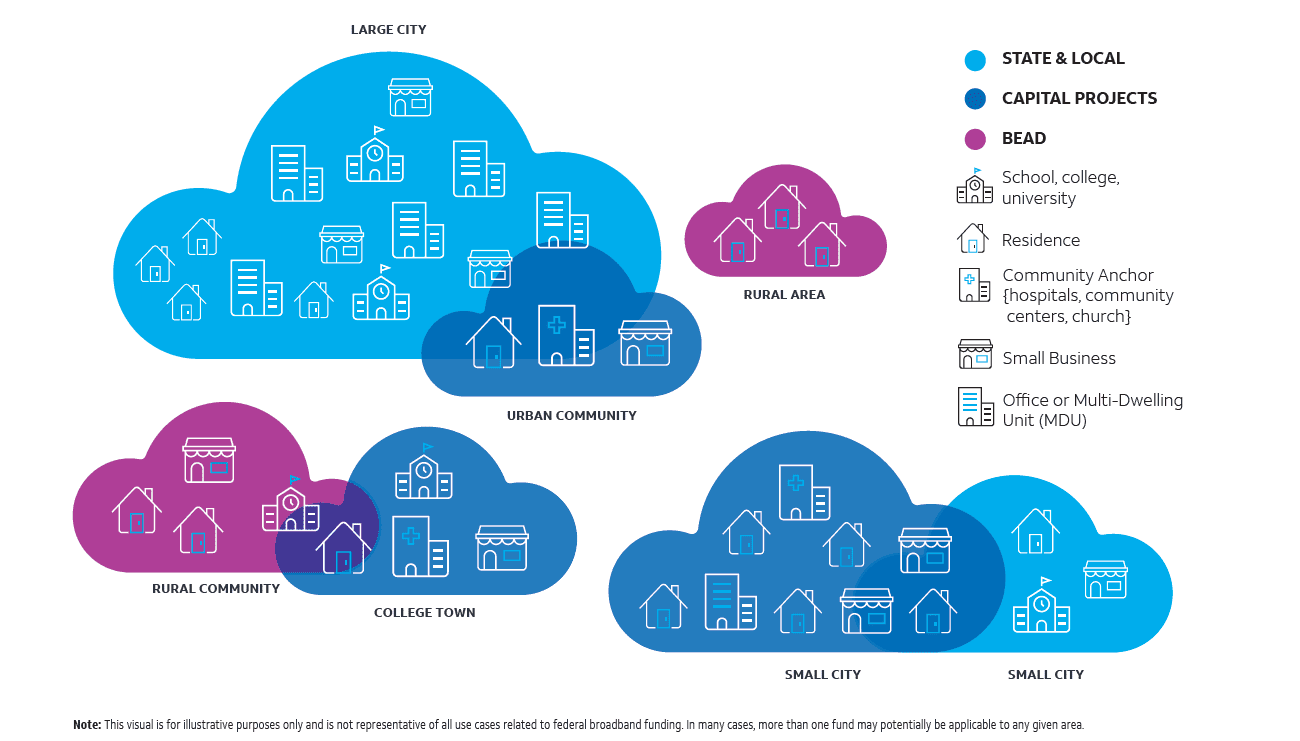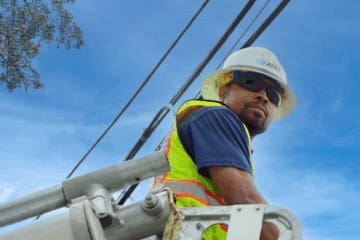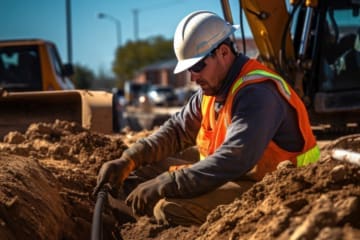Earlier this month, I had the great opportunity to hear from and talk with leaders at every level of government on what they are excited about as it relates to federal broadband funding.
There was unequivocal agreement that now is the time to make sure that industry and government come together to get everyone across our country the high-speed connections they need to thrive in today’s world.
But, we’re also hearing that it’s all a little overwhelming. There are several funding sources to consider, all with varying rules, but all with the same objective: to connect as many people as possible. So, as you make your plan, how do you decide what funds to use and where? Let’s talk a little about what that could look like.
These new laws, including the American Rescue Plan (ARP) Act and the Infrastructure Investment and Jobs Act (IIJA), created three primary funds that offer the opportunity to finally bring connection to communities without adequate broadband service.
State & Local Fiscal Recovery Funds (SLFRF) – $350 billion
The SLFRF was created through the American Rescue Plan (ARP) Act. Communities can use the funding today to address their specific broadband needs. The SLFRF offers flexibility in providing connectivity to a variety of locations, including:
- Schools
- Residences
- Small businesses and offices
- Multi-dwelling units
This flexibility also means state and local governments can utilize these funds to go beyond just increasing access to locations without broadband. They can use these funds to upgrade aging infrastructure and address unreliable service or a lack of affordable options with state-of-the-art fiber optic technology. After all, access is not the only barrier to closing the digital divide.
Capital Projects Fund (CPF) -$10 billion
The CPF, also created through ARP, places a special emphasis on addressing the critical connectivity issues that are specific to individual communities.
The COVID-19 pandemic changed our lives in many ways as schooling, work and healthcare all moved online, making reliable internet connection a necessity.
Given the unique needs of our communities exposed by the COVID-19 pandemic, the effectiveness of CPF can be maximized by working with community leaders and institutions that know their area best. Working with communities, states can use CPF to address urgent needs today through:
- Broadband infrastructure projects
- Digital connectivity technology projects
- Multi-purpose community facility projects
Broadband Equity, Access and Deployment (BEAD) Program – $42.5 billion
The BEAD Program was created by the Infrastructure Investment and Jobs Act (IIJA). The funding dedicated through the BEAD Program requires states to focus on expanding broadband access to unserved and underserved areas, as identified by a forthcoming FCC national broadband map:
- Unserved areas: locations with speeds <25 download/3 upload Mbps
- Underserved areas: locations with speeds <100 download/20 upload Mbps
When available, BEAD funds will be crucial to expanding access in rural areas that have not already been connected through projects funded by SLFRF and CPF. Both SLFRF and CPF funds are available today, and state and local governments should move quickly to get their communities connected as soon as possible.
We’ve put together a graphic of how each of these funds can come together to solve your connectivity needs, no matter the location.1

By understanding the differences between each of these programs and how they can work together, you can get the most out of these transformative funding programs. We have the ability to make significant progress in connecting more Americans to high-speed internet across the country, and we can get started today.
1 Please note, this visual is for illustrative purposes only and is not representative of all use cases related to federal broadband funding. In many cases, more than one fund may potentially be applicable to a given area.





